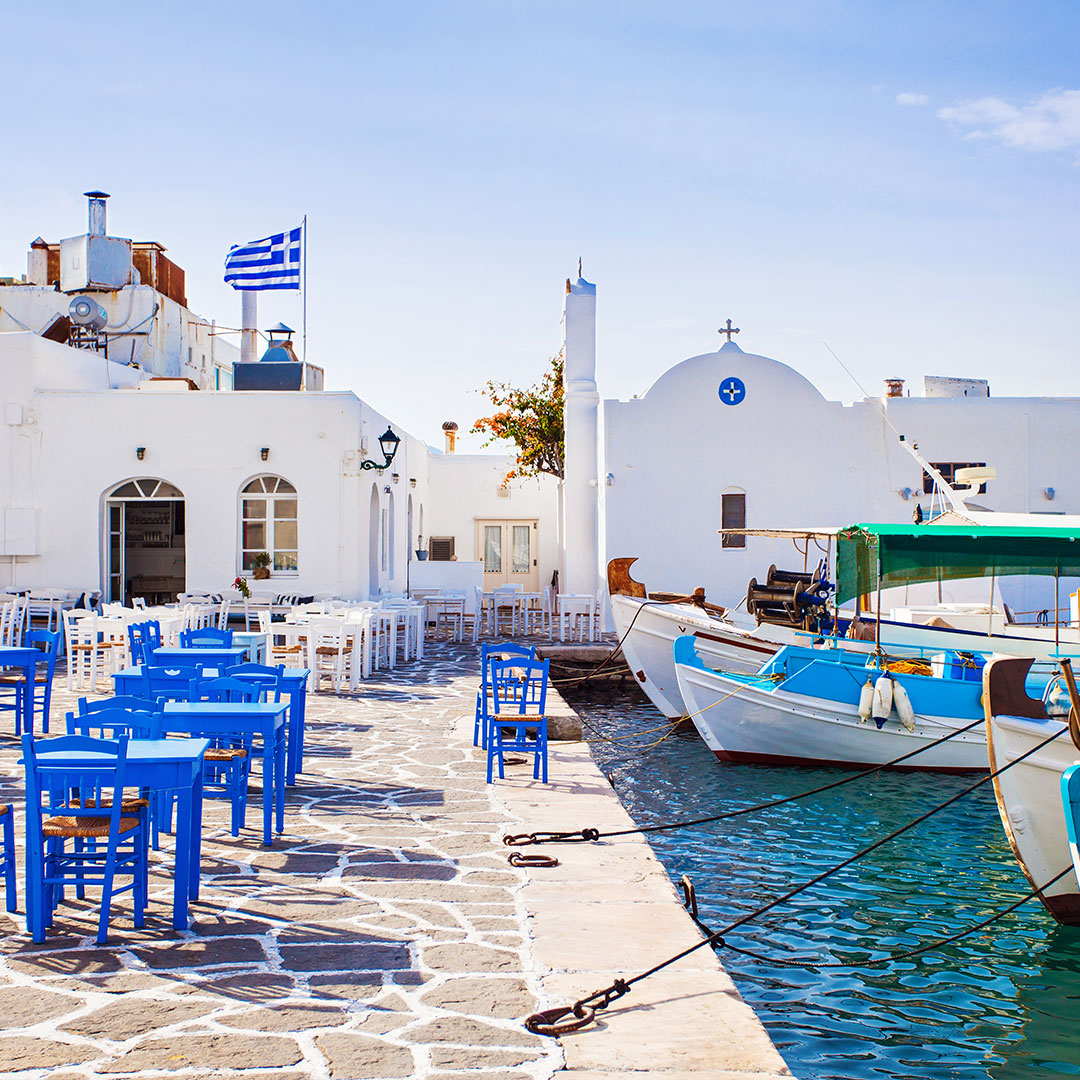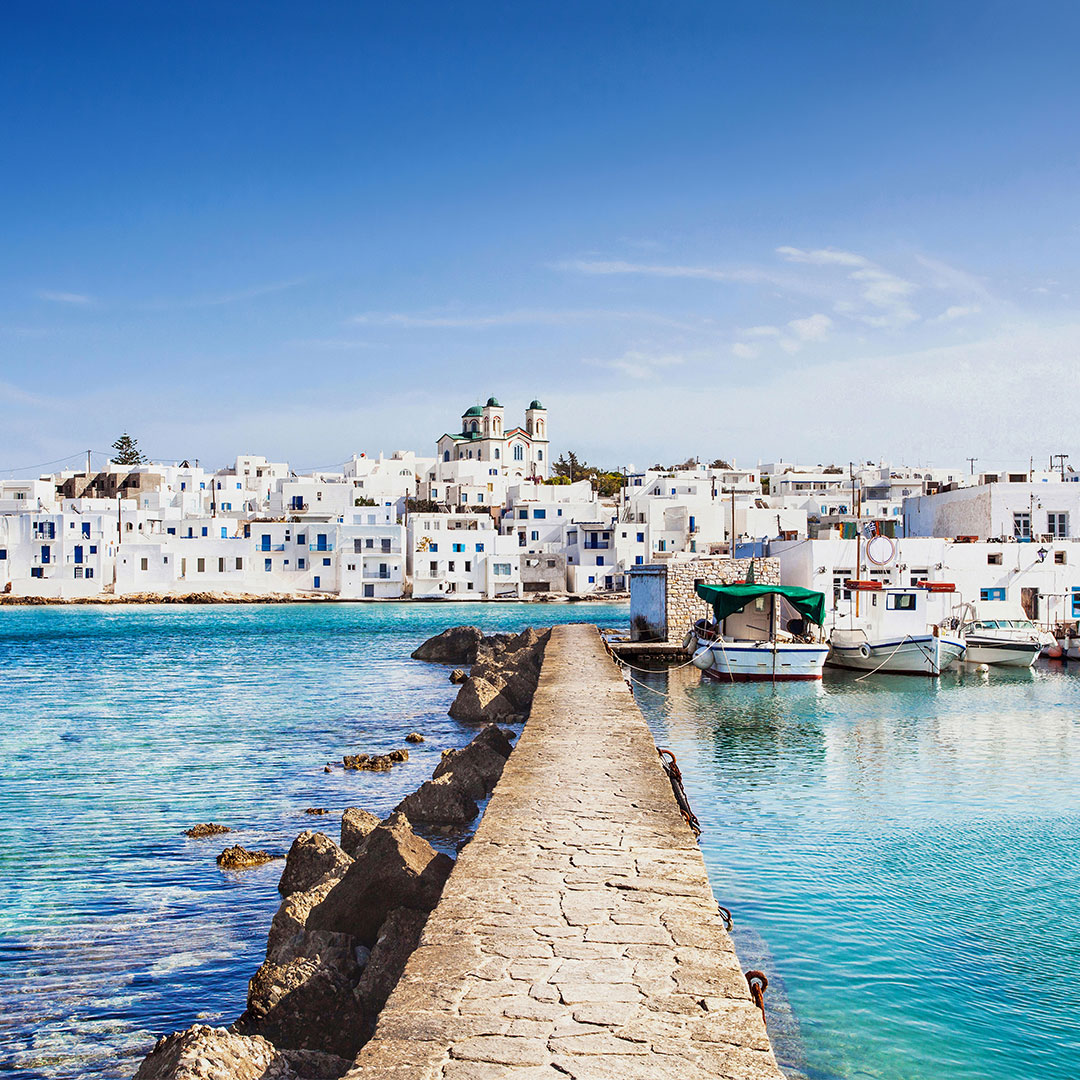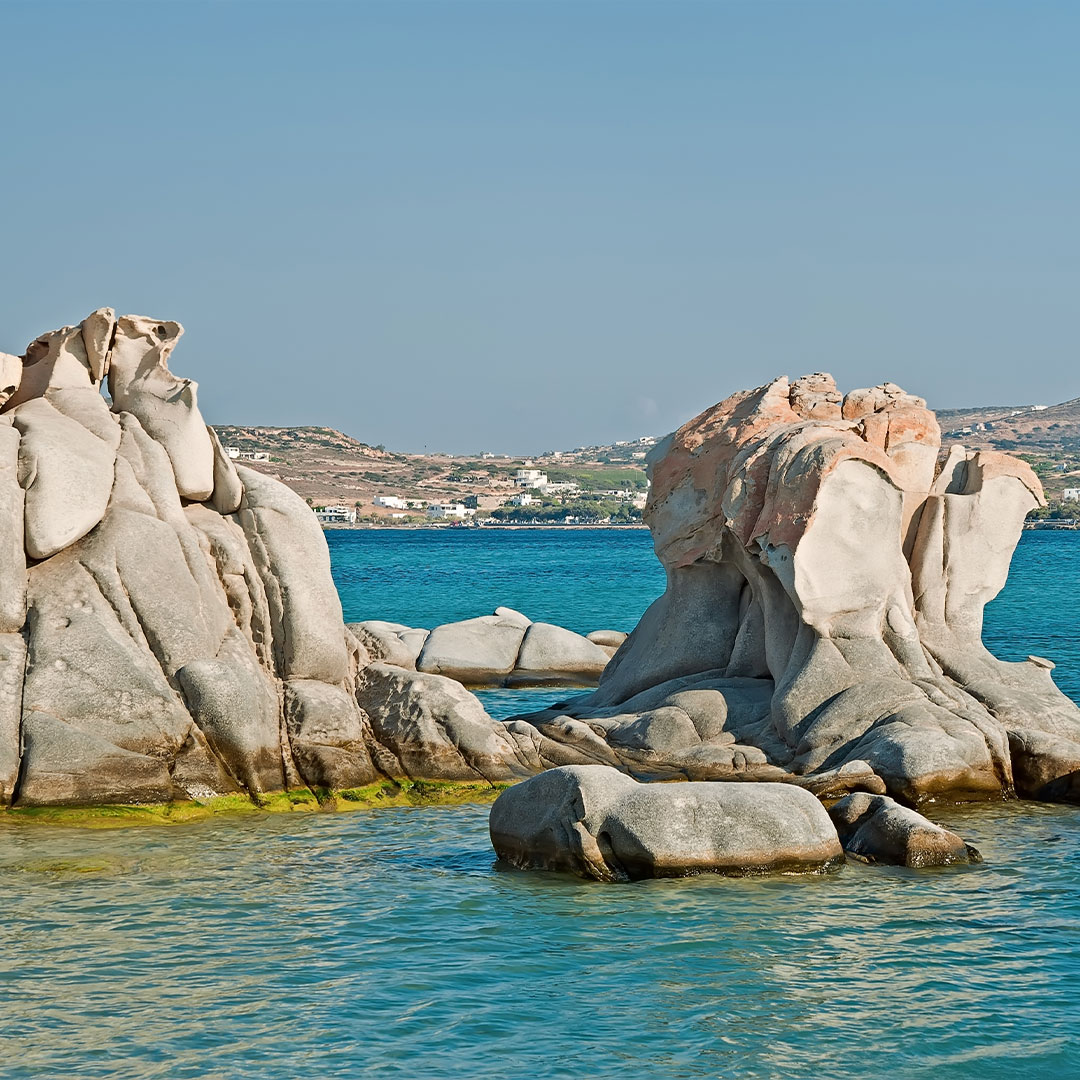
Unrivalled natural beauty, beaches with crystal clear waters, unrivalled Byzantine footpaths connecting traditional villages and breathtaking landscapes
Parikia, the capital of Paros, is a beautiful Cycladic village with whitewashed cubic houses and impressive neoclassical mansions. A well preserved 13th century Venetian castle stands proudly on a hill at the centre of the village offering an amazing view of Parikia. In the capital you can also admire an important ecclesiastical monument, the 6th century church of Panayia Ekatontapyliani, also called Katapoliani. The name “Ekatontapylianí” means the church with 100 gates (“Ekato Pyles” in Greek), one of which is a secret one! Don’t miss the chance to visit the baptistery (4th century AD), one of the best preserved baptisteries in the Orthodox East, and the Byzantine Museum. The Parikia Byzantine Museum is housed on the ground floor of the church. Its exhibits include icons, wood-carved iconostases and other heirlooms from various monasteries and churches on the island.
Sightseeing
The Archaeological Museum displays exhibits from the island’s monuments (such as the Sanctuary of Asklipios and Pythios Apollonas, Delion etc.), including part of the "Parian Chronicle”, a chronological table of the 3rd century BC with references to important events and personalities of antiquity.
The marble quarries at Marathi, where the famous Parian marble used to be extracted, were in operation from the 3rd millennium BC up to the 19th century. The mining galleries along with remains of 19th century industrial buildings are still preserved and can be visited!
Wander through beautiful traditional villages like Naoussa, a colourful village, where the ruins of a Venetian fortress stand at the entrance to its small harbour. Lefkes is located at the highest point of Paros and enjoys stunning views of the island. The village is set up in the mountains and is surrounded by a rich green landscape. It has very well preserved Cycladic and neoclassical buildings, beautiful squares and narrow marble alleys. The Museum of Aegean Folk Culture at Lefkes offers a tour of the culture of the Archipelago; discover the Aegean world through its exhibits, which include pieces related to the architecture, traditional trades and geology of the islands.


What about beaches?
Sun-drenched beaches, like Chrissí Aktí, Santa Maria and Poúnda, welcome sun-loving visitors who want to enjoy the crystal clear sea, the sun or even their favourite water sports! Every year Chrissí Aktí is the venue for the Windsurfing World Championship.
On the sea bed at Alykí beach, to the southwest, you can explore the ruins of an ancient town!
Don’t miss the opportunity to live experience an exhilarating touring all around the coast of the island by canoe or kayak! Enjoy the unusual natural landscape with impressive white rock formations on Kolymbithres beach.
The beach of Kalogeros, surrounded by red and green clay rocks offers a really effective spa for free! Cover your body with clay and let it dry in the sun; after a while rinse yourself in the sea and your body will feel softer than ever!
Discover the island’s stunning beauty by hiking!
Walk along “strates”, the trails created by farmers to help them cross the island and transport their goods. It’s like stepping back into history. Here are two itineraries you might like to try:
The Byzantine Lefkes-Prodromos trail, paved with marble paving stones most of the way, takes an hour to walk. It starts from the verdant village of Lefkes and crosses slopes with cultivated terraces and a small Byzantine bridge. The final destination is to the beautiful village of Prodromos with its impressive maze-like alleys.
Starting from the village of Marpissa, with its Byzantine churches, 17th century houses and quaint windmills, walk towards Kefalos Hill and Agios Antonios Monastery. Going uphill along the cobblestone path, you will come across the ruins of the Venetian town of Kefalos and the Castle. At the top, enjoy the view over the eastern part of the island and visit the Monastery of Agios Antonios with its gold-leaf wood-carved iconostasis.



